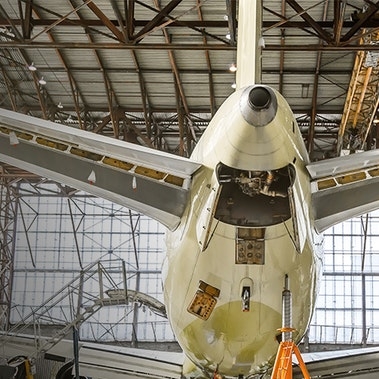Beset by large numbers of parked planes, airlines are embracing the concept of early retirement for portions of their fleets, including in some cases relatively young aircraft. These retirements will provide a fresh source of “green-time” engines that still have some life in them. For planes that are still flying but nearing the end of their engine life, swapping in these green-time engines will allow airlines to put off thousands of costly engine restorations to a later date. Oliver Wyman crunched the numbers to determine what exactly this will mean to the MRO industry, in terms of a reduction in shop visits and spend over the next couple of years.
Fewer Aircraft, More Engines
To start with, we expect that overall 2020 MRO spend will decline by 50 percent plus, due to less flying, parking, early retirements, and fewer new aircraft deliveries. Currently, about half of the global aircraft fleet is parked – 14,000 aircraft in total. Given that lower foreseeable demand will keep large numbers of aircraft parked through at least 2020, we expect the airlines will look to trim maintenance and inventory costs by retiring some 2,200 planes early (Figure 1). A number of airlines have already announced early retirement plans this year, including American Airlines, Air Canada, and Lufthansa.
Figure 1: Aircraft parking and estimated retirement levels
We estimate that these early retirements will make available nearly 4,000 engines with more than 90 days of on-wing life remaining, of which over 60 percent will have 5,000 hours or more of green time left. To conserve cash, operators will harvest a large percentage of these engines to fly, thus avoiding expensive end-of-life engine restorations that otherwise would have to happen in 2020-2021.
Engine MRO: Leaner Years Ahead
Based on engines coming up for restoration in the near term – and which now could be replaced by green-time engines instead – we believe that engine restoration shop visits could drop nine percent this year and seven percent next year. In all, some 2,400 shop visits could be displaced. The resulting reduction in spend of approximately $1.75 billion will weigh heavily on the already depressed MRO market (Figure 2).
The largest reduction in spend likely will be in 2020 and 2021, given that most of the available green-time engines will provide an extra year or two of life (although some could be in use for up to four years). After that, delayed maintenance events will be on the schedule once more, and spend can be expected to return to a more normal range. From 2024 onward, engine MRO spend will reflect the annual requirements of a newer, more streamlined fleet.
Figure 2: Impact of early retirements on forecast engine MRO market spend
Engine Platform Variation
Our analysis is based on tail-level data and includes 73 engine platforms where motors are retiring early (including the CFM 56, AE3007, CF34, and RB211 families). Depending on the engine type, MRO spend could be impacted by as little as one percent and as much as 39 percent in 2020 and 2021. Older, sunsetting engine fleets will see some of the largest reductions in spend, as green-time motors might simply replace the final shop visit for many engines. We estimate that approximately seven engine platforms will see a reduction in spend of greater than 25 percent.
Less is More
Ultimately, many different factors could influence how fast and to what extent early retirements and the availability of green-time engines influence market dynamics. But as this snapshot based on current data demonstrates, slowing down engine MRO spend in the near term is a lever that operators and engine owners will doubtless be eager to use to manage their recovery – and MROs will need to be prepared for it.





